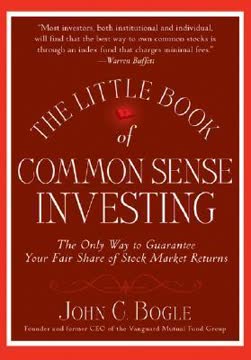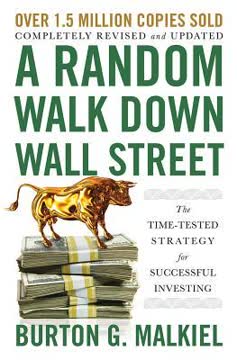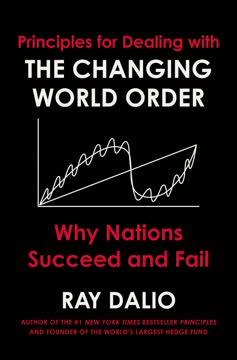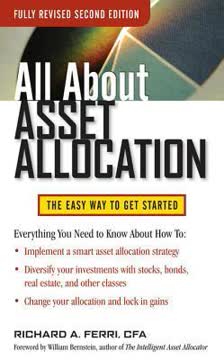Key Takeaways
1. ETFs: The Revolutionary Investment Vehicle
ETFs are flying high. Better known by the acronym ETFs, each week new funds are launched on Wall Street exchanges and land in the portfolios of investors across the nation.
A financial innovation. Exchange-traded funds (ETFs) represent a significant evolution in the investment industry, offering investors a unique blend of features from both mutual funds and individual stocks. They provide broad market exposure, professional management, and diversification like mutual funds, while also offering the flexibility to trade throughout the day like stocks.
Key advantages:
- Lower investment costs compared to traditional mutual funds
- Increased trading flexibility
- Greater transparency in holdings
- Enhanced tax efficiency in taxable accounts
Growth trajectory. The ETF market has experienced exponential growth since 2000, with assets expected to reach $1 trillion by 2010. This rapid expansion is driven by investor demand for more flexible, cost-effective investment vehicles that can provide exposure to a wide range of asset classes and investment strategies.
2. Understanding ETF Mechanics and Operations
An arbitrage mechanism ensures that the price investors pay for ETF shares is close to the true net asset value (NAV) of the underlying securities that make up the fund.
Creation and redemption process. The unique operational structure of ETFs involves a process where authorized participants (APs) can create or redeem large blocks of ETF shares, known as creation units, by exchanging them for a basket of underlying securities. This mechanism helps keep the ETF's market price aligned with its net asset value (NAV).
Key operational aspects:
- ETFs trade on stock exchanges throughout the day
- Pricing is based on supply and demand, with intraday indicative values calculated every 15 seconds
- Settlement occurs three business days after the trade (T+3)
- Most ETFs use a sampling technique to replicate their target index, rather than holding every security
Transparency and efficiency. The ETF structure provides greater transparency than traditional mutual funds, as holdings are typically disclosed daily. This transparency, combined with the creation/redemption process, contributes to the tax efficiency and lower costs associated with ETFs.
3. Navigating the Diverse Landscape of ETF Types
There are many different exchange-traded products including exchange-traded funds (ETFs), exchange-traded notes (ETNs), grantor trusts, and unit investment trusts (UITs).
Variety of structures. The ETF marketplace encompasses a range of product types, each with its own unique characteristics and regulatory framework. Understanding these differences is crucial for investors to make informed decisions.
Main types of exchange-traded products:
- ETFs organized under the Investment Company Act of 1940 (40 Act Funds)
- Unit Investment Trusts (UITs)
- Exchange-Traded Notes (ETNs)
- Grantor Trusts
- Commodity and Currency ETFs
Regulatory considerations. Each type of exchange-traded product is subject to different regulations, which affect aspects such as portfolio management flexibility, tax treatment, and investor protections. For example, 40 Act Funds offer greater flexibility in security selection and weighting compared to UITs, while ETNs are debt instruments that carry issuer credit risk.
4. The Power of Index-Based Investing
Benchmark indexes are designed to capture the performance of a financial market or segment of a market. They are stable baskets of stocks, bonds, commodities, or other assets whose overall price level, risk, and return are used as standard measurements worldwide.
Passive investing foundation. Index-based ETFs form the core of passive investing strategies, offering investors a cost-effective way to gain exposure to broad market segments or specific sectors. These funds aim to replicate the performance of a benchmark index as closely as possible.
Key aspects of index-based ETFs:
- Lower costs due to reduced need for active management
- Broad market exposure and diversification
- Transparency in holdings and methodology
- Predictable performance relative to the benchmark
Beyond traditional indexes. While many ETFs track well-known market-cap weighted indexes, there's a growing trend towards alternative indexing methodologies, such as fundamental weighting or factor-based approaches. These "smart beta" strategies aim to enhance returns or reduce risk compared to traditional market-cap weighted indexes.
5. ETFs as Tools for Portfolio Diversification
ETF issuance has been expanded well beyond stock and bond indexing. Funds are now available in several alternative asset classes, including individual commodities, commodity futures, futures indexes, and foreign currencies.
Expanding investment universe. ETFs have democratized access to a wide range of asset classes and investment strategies that were previously difficult or expensive for individual investors to access. This expansion allows for greater portfolio diversification and more sophisticated investment approaches.
Diversification opportunities:
- Global and emerging market equities
- Sector and industry-specific funds
- Fixed income across various maturities and credit qualities
- Commodities and precious metals
- Currencies
- Real estate investment trusts (REITs)
Risk management. The ability to easily combine different asset classes and investment styles through ETFs enables investors to construct portfolios that better match their risk tolerance and investment objectives. This can lead to improved risk-adjusted returns over the long term.
6. Active Management Strategies with ETFs
Active investing is all about achieving returns that are superior to the financial markets. That goal is the crème de la crème for some investors.
Beyond passive investing. While many ETFs are designed for passive, index-based strategies, the ETF structure also lends itself to more active management approaches. These strategies aim to outperform broad market benchmarks through various techniques.
Active ETF strategies:
- Tactical asset allocation
- Sector rotation
- Factor investing
- Thematic investing
- Quantitative models
Challenges and considerations. Active strategies often come with higher costs and the potential for greater tracking error relative to benchmarks. Investors should carefully evaluate the methodology, track record, and expenses of actively managed ETFs before incorporating them into their portfolios.
7. Tax Efficiency and Cost-Effectiveness of ETFs
The creation and redemption of creation units by authorized participants creates an important tax benefit to the holders of ETFs in taxable accounts.
Tax advantages. The unique structure of ETFs allows for greater tax efficiency compared to traditional mutual funds. This is primarily due to the in-kind creation and redemption process, which enables ETF managers to minimize capital gains distributions to shareholders.
Cost benefits:
- Lower expense ratios compared to actively managed mutual funds
- Reduced transaction costs due to infrequent rebalancing
- Potential for lower capital gains taxes in taxable accounts
Impact on returns. The tax efficiency and lower costs associated with ETFs can have a significant positive impact on long-term investment returns, especially for investors in higher tax brackets or those investing in taxable accounts.
8. Special ETF Strategies for Risk Management and Speculation
ETFs are versatile. They can be optioned, shorted, hedged, and bundled into other securities.
Advanced applications. The flexibility of ETFs allows for sophisticated investment strategies that were previously difficult or expensive to implement for individual investors. These strategies can be used for both risk management and speculative purposes.
ETF strategies for risk management and speculation:
- Hedging industry-specific risk
- Pairs trading and market-neutral strategies
- Currency hedging
- Leveraged and inverse ETFs for short-term tactical positions
- Options strategies on ETFs
Caution required. While these advanced strategies offer powerful tools for portfolio management, they also come with increased complexity and risk. Investors should thoroughly understand the mechanics and potential outcomes of these strategies before implementing them.
9. The Future of ETFs and their Impact on Investing
The ETF marketplace is evolving, even though the growth in the number of ETFs has been unprecedented in the last few years. Each year, the structure and depth of the offerings expand.
Continued innovation. The ETF industry continues to evolve rapidly, with new product types, asset classes, and investment strategies being introduced regularly. This ongoing innovation is likely to further reshape the investment landscape in the coming years.
Emerging trends in ETFs:
- Actively managed ETFs
- Environmental, Social, and Governance (ESG) focused funds
- Thematic ETFs targeting specific industries or trends
- Expansion into alternative asset classes
- Customized and direct indexing solutions
Implications for investors. As the ETF marketplace expands and evolves, investors will have access to an ever-growing toolkit for portfolio construction and risk management. However, this proliferation of choices also increases the importance of due diligence and understanding the underlying methodologies and risks of each ETF.
Last updated:
FAQ
What's The ETF Book about?
- Comprehensive Guide: The ETF Book by Richard A. Ferri is an extensive resource on exchange-traded funds (ETFs), detailing their structure, benefits, and investment strategies.
- Historical Context: It traces the evolution of ETFs from their inception in 1993 to their current prominence in the investment world.
- Practical Strategies: The book offers practical advice on using ETFs in portfolios, including both passive and active management techniques.
Why should I read The ETF Book?
- Expert Insights: Richard A. Ferri is a seasoned investment adviser, providing reliable strategies for ETF investing.
- Simplified Concepts: The book breaks down complex financial concepts, making it accessible to both novice and experienced investors.
- Informed Decisions: It equips readers with the tools to make informed investment decisions in the growing ETF market.
What are the key takeaways of The ETF Book?
- ETF Benefits: Highlights include lower costs, tax efficiency, and trading flexibility, making ETFs a powerful investment tool.
- Index Understanding: Understanding the indexes ETFs follow is crucial for selecting the right ones for your portfolio.
- Portfolio Management: Offers strategies for managing an ETF portfolio, including passive investing and active management techniques.
How do ETFs differ from traditional mutual funds according to The ETF Book?
- Trading Flexibility: ETFs can be traded throughout the day on stock exchanges, unlike mutual funds, which trade at the end of the day.
- Cost Efficiency: Generally, ETFs have lower operating costs due to fewer client services required.
- Tax Efficiency: The in-kind creation and redemption process of ETFs minimizes capital gains distributions, benefiting taxable accounts.
What is the significance of the arbitrage mechanism in ETFs as explained in The ETF Book?
- Price Alignment: The arbitrage mechanism keeps ETF prices close to their net asset value (NAV) through the actions of authorized participants.
- Market Efficiency: It ensures quick adjustments to supply and demand, maintaining liquidity and reducing price discrepancies.
- Investor Protection: By aligning ETF prices with underlying assets, it protects investors from significant losses due to mispricing.
What are the main types of ETFs discussed in The ETF Book?
- Broad Market ETFs: These track major market indexes like the S&P 500, providing exposure to a wide range of securities.
- Sector and Industry ETFs: Focus on specific sectors or industries, allowing targeted investment in areas like technology or healthcare.
- Thematic and Specialty ETFs: Invest based on themes or strategies, such as socially responsible investing or emerging technologies.
What are some practical portfolio management strategies using ETFs from The ETF Book?
- Passive Investing: Advocates for a buy-and-hold strategy using a diversified mix of ETFs to achieve market returns.
- Active Management: Discusses strategies like market timing and sector rotation for more experienced investors.
- Rebalancing Techniques: Emphasizes the importance of regularly rebalancing an ETF portfolio to maintain desired asset allocations.
How does The ETF Book define and explain the concept of tax-loss harvesting?
- Definition: Tax-loss harvesting involves selling securities at a loss to offset capital gains taxes on profitable investments.
- Implementation: Suggests selling losing ETFs and reinvesting in similar but not identical ETFs to maintain market exposure.
- Long-term Benefits: Enhances after-tax returns by effectively managing tax liabilities, especially in taxable accounts.
What is the core-and-explore strategy mentioned in The ETF Book?
- Core Portfolio: Involves building a core of low-cost, passive ETFs that track market indexes for stable returns.
- Explore Portion: Consists of more aggressive or actively managed ETFs aiming to outperform the market.
- Balancing Costs and Returns: While the explore portion may incur higher costs, it can enhance overall portfolio returns.
What are the benefits of international investing as outlined in The ETF Book?
- Diversification: International investing offers greater diversification, reducing overall portfolio risk.
- Currency Exposure: Provides exposure to foreign currencies, enhancing returns when the U.S. dollar weakens.
- Growth Markets: Highlights the potential of emerging markets for higher growth compared to developed markets.
What is the difference between passive and active ETF management as discussed in The ETF Book?
- Passive Management: Involves selecting ETFs that track market indexes and holding them long-term for market returns.
- Active Management: Seeks to outperform benchmarks through strategic selection and timing, often with higher costs.
- Risk and Return: Active management can yield higher returns but comes with increased risk and costs.
How does The ETF Book suggest managing risk in an ETF portfolio?
- Asset Allocation: Emphasizes a strategy that aligns with risk tolerance and financial goals for effective risk management.
- Regular Rebalancing: Advises regular rebalancing to maintain target asset allocation and lock in gains.
- Hedging Strategies: Discusses using strategies like shorting ETFs or options to protect against sector downturns.
Review Summary
The ETF Book receives mixed reviews, with an average rating of 3.67 out of 5. Readers appreciate its comprehensive coverage of ETFs, including their history, mechanics, and investment strategies. The book is praised for its detailed explanations and technical information, making it suitable for serious investors and professionals. However, some find it overly lengthy and too focused on the US market. Critics note that certain sections feel dated, and the author's self-promotion can be distracting. Overall, readers value the book's insights but suggest focusing on specific chapters for practical knowledge.
Similar Books








Download PDF
Download EPUB
.epub digital book format is ideal for reading ebooks on phones, tablets, and e-readers.






